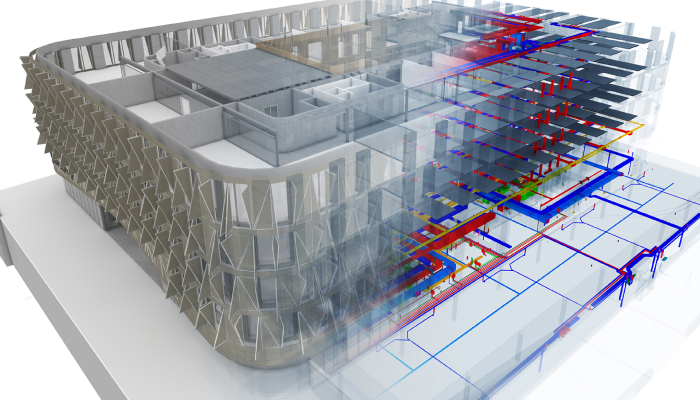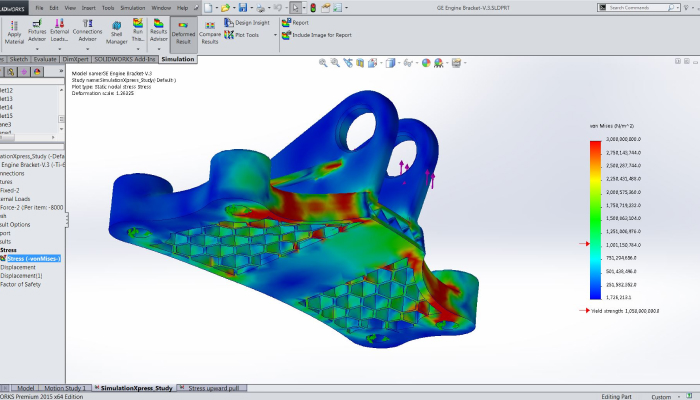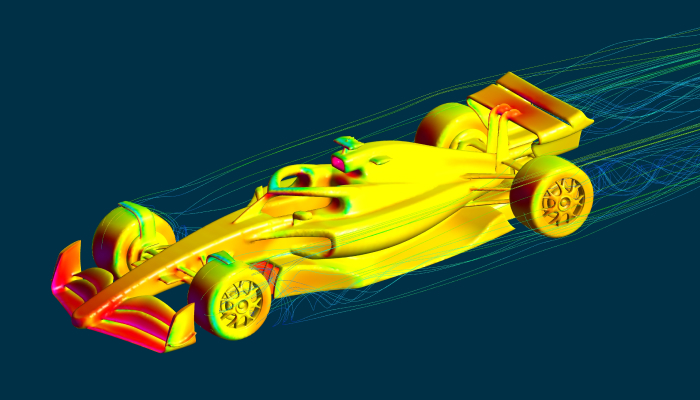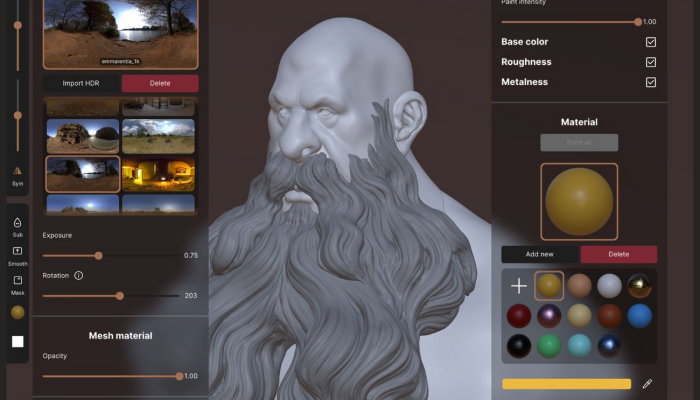Getting Started with 3D Printing: How to Choose Your 3D Modeling Software

When starting out in 3D printing, or when looking to push your limits, it is crucial to master your 3D printer, understand how to choose your materials, and know how to adjust some important slicing software settings. Once these essential steps are mastered and you want to print your own creations, it becomes interesting to experiment with creating your own 3D models using 3D modeling software.
Choosing the right 3D modeling or CAD software is a crucial step to ensure the success of your projects, whether they involve modeling, animation, or 3D simulation. With so many options available on the market, it can be difficult to know which software will best suit your specific needs. Discover the key factors to consider when choosing your CAD software to ensure it truly meets your requirements.

Understanding Your Needs
Before comparing the different CAD software options available, it is essential to clearly define your needs. Start by focusing your research on your field of activity. Different industries have specific requirements when it comes to CAD. For example, architecture, mechanical engineering, product design, and 3D animation all have very distinct needs.
The type of project you undertake will determine whether you need 2D modeling, 3D modeling, animation, or simulation. Each type of project may require specific features, so it is important to think about this beforehand.
Depending on your projects, you may need to create and manipulate models that vary in size, detail, and complexity. 3D modeling software differs in its ability to handle simple versus complex models. It is important to choose software that can handle the level of complexity your projects demand.

CAD software allows you to design or replicate objects in digital form.
Finally, depending on your budget, some CAD software may not be suitable. Make sure to evaluate the associated costs, whether they involve subscription licenses, perpetual licenses, or free versions with limited features.
Different Types of 3D Modeling and Their Software
Computer-Aided Design (CAD) or 3D modeling spans a wide range of industries, applications, and distinct modeling types. From engineering to animation and simulation, it is important to understand the types of modeling each software offers to identify which best meets your needs.
Engineering
3D modeling for engineering is primarily used for designing precise parts and mechanical assemblies. Features like component libraries, part banks, and tools such as threading can be very useful for engineering applications. Additionally, some CAD software includes computer-aided manufacturing (CAM) tools, making it easier to move from modeling to production.
Some of the most well-known CAD software for engineering include: SolidWorks, Siemens NX, CATIA, Fusion 360, Inventor, Creo, and Solid Edge.
Architecture
In architecture, 3D modeling is essential for building design, space planning, and structural visualization. CAD software for architecture often includes tools for creating detailed construction plans, photorealistic renderings, and natural lighting simulations.
Popular software for architecture includes: AutoCAD, Revit, ArchiCAD, SketchUp, and Vectorworks.

Building Information Modeling (BIM) is a common approach for 3D modeling in the design and construction of buildings and architectural structures (Photo credit: Vectorworks).
Animation and Visual Effects
3D modeling for animation and visual effects focuses on creating characters, environments, and animated objects. These software programs offer advanced features for animation, texturing, rendering, and motion simulation.
Commonly used software in this field includes: Maya, Blender, Houdini, 3ds Max, and Cinema 4D.
Product Design
3D modeling for product design involves creating detailed and aesthetically refined models for consumer products. Software in this area enables the creation of virtual prototypes, evaluation of ergonomics, and optimization of designs before manufacturing.
The most widely used product design software includes: Rhino, Fusion 360, SolidWorks, and Alias.
Simulation and Optimization
Simulation and optimization software allows users to test and improve the performance of 3D models under various conditions. These tools are used to analyze aspects such as mechanical stress, fluid dynamics, and topological optimization.
Key software in this category includes: Ansys, Simulia (Abaqus), Altair Inspire, and COMSOL Multiphysics.

Simulation enables the analysis and prediction of a 3D model’s performance (Photo credit: Grabcad)
Organic Modeling and Sculpting
Organic modeling and 3D sculpting focus on creating complex, highly detailed shapes, often used in digital art and video games. These software programs provide powerful tools for sculpting, texturing, and adding fine details.
Popular software for organic modeling and sculpting includes: ZBrush, Mudbox, 3D Coat, and Blender.
Topological Optimization and Generative Design
Topological optimization and generative design are advanced techniques that create structures optimized for weight, material use, and performance. Topological optimization reduces material usage while maintaining strength and functionality, whereas generative design explores multiple design variations to identify the optimal solution.
Specialized software in these areas includes: nTopology, Altair Inspire, Fusion 360, SolidWorks (with its simulation modules), and Simulia.

Additional Criteria for Choosing 3D Modeling Software
When selecting CAD software, it is important to consider several criteria beyond basic features and the specific needs of your industry. Here are key points to examine to make an informed choice.
Operating System Compatibility
Ensure that the CAD software you are considering is compatible with your computer’s operating system, whether it’s Windows, Mac, or Linux. Compatibility ensures a smooth installation and optimal performance on your hardware. Also, check for compatibility with other software commonly used in your workflow.
Ease of Use
Ease of use is crucial for quick and effective adoption of the software.
User Interface: Software with an intuitive and ergonomic interface makes learning and usage easier. Look for programs with clear navigation and accessible tools.
Documentation and Technical Support: Check the availability of guides, tutorials, and responsive technical support. Good documentation and accessible support can be extremely helpful in case of questions or issues.
Features
The features offered by 3D modeling software can vary widely.
2D and 3D Modeling: Look for software that provides robust tools for creating precise models in both 2D and 3D.
Simulation and Analysis: Some software includes simulation capabilities to test models under real-world conditions. This may include stress analysis, fluid dynamics, or thermal analysis.
Collaboration and Version Control: For team projects, real-time collaboration and version control are essential. These features allow multiple users to work efficiently together and track changes made to the project.

Some 3D modeling software includes simulation features that enable a variety of analyses (Photo credit: Fetchcfd).
Performance and Hardware Requirements
Software performance and hardware requirements are important factors to consider.
Minimum and Recommended Specifications: Check the hardware specifications needed to run the software optimally. Ensure your system meets these requirements to avoid slowdowns.
Optimization for Specific Tasks: Some software is better optimized for certain tasks, such as rendering or simulation. Choose software that performs well in the areas most relevant to your work.
Cost
The cost of CAD software can vary significantly.
Open-Source vs. Proprietary Software: Open-source software may be free but less powerful, while proprietary software generally offers more advanced features.
License Model: Compare the costs of monthly/annual subscriptions versus perpetual licenses. Consider what is more cost-effective for you in the long term. For example, Fusion 360 offers an annual subscription, whereas SolidWorks provides perpetual licenses with annual maintenance fees.

3D animation software is commonly used to create animated films (Photo credit: Autodesk).
Scalability and Updates
The ability of software to grow with your needs is a crucial criterion.
Ability to Evolve with User Needs: Choose software that can expand as your requirements grow. It should be able to incorporate new features over time.
Frequency of Updates and Support: Regular updates indicate software vitality, security, and reliability. Good developer support is also essential for resolving issues quickly and effectively.
Levels of Complexity in CAD Software
3D modeling software varies in complexity and ease of use. Here’s a classification based on skill level, from beginner to expert.
Beginner Software
CAD software for beginners offers an intuitive interface and basic features, ideal for those just starting with 3D modeling.
Tinkercad: Free and web-based, Tinkercad is perfect for beginners. It offers a simple interface and easy-to-use tools for creating basic models.
SketchUp Free: The free version of SketchUp is appreciated for its ease of use and ability to quickly create simple 3D models.
Intermediate Software
Intermediate software provides more advanced features and is suitable for users with some 3D modeling experience.
Fusion 360: Autodesk’s powerful and versatile software offers tools for 3D modeling, simulation, and manufacturing. It is used by both hobbyists and professionals.
Blender: Open-source and free, Blender is a comprehensive toolset for modeling, animation, rendering, and more. It is popular among 3D artists and game developers.
Expert Software
Expert-level software includes advanced features and is used by professionals for complex, demanding projects.
CATIA: Developed by Dassault Systèmes, CATIA is used in demanding industries such as aerospace and automotive. It offers advanced modeling, simulation, and manufacturing capabilities.
Maya: A standard in the animation and visual effects industry, Maya provides sophisticated tools for modeling, animation, and rendering.

3D sculpting enables the creation of organic models with greater ease (Photo credit: Nomad Sculpt).
Choosing the right CAD software depends on many factors, including your specific needs, budget, and skill level. Take the time to try out different software (many paid programs offer limited free versions or trial periods), read reviews, and consult forums to make an informed decision.
By considering the criteria outlined in this guide and evaluating the available options, you will be better equipped to select the CAD software that best fits your specific needs and expertise. To help you get started, here is a non-exhaustive list of CAD software currently available on the market, covering a wide range of industries and applications:
nTopology, Tinkercad, Blender, Fusion 360, Rhinoceros (Rhino 8), AutoCAD, Houdini, Revit, Maya, FreeCAD, ZWSoft, Creo, Solid Edge, 4D Additive, SketchUp, SelfCAD, CATIA, OpenSCAD, Onshape, Siemens NX, SolidWorks, Cognitive Design Systems, Inventor, TurboCAD, Bricsys, 3D Coat, ZBrush, Mudbox, 3ds Max, Ansys, Grasshopper, Altair Inspire, Simulia, Altair DesignAI.
Which 3D modeling software best meets your needs? Let us know in a comment below or on our LinkedIn or Facebook pages! Plus, don’t forget to sign up for our free weekly Newsletter to get the latest 3D printing news straight to your inbox. You can also find all our videos on our YouTube channel.






